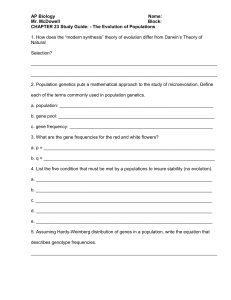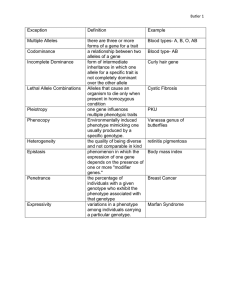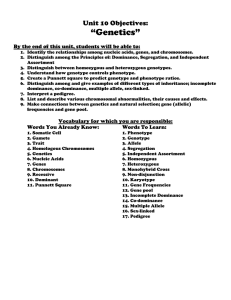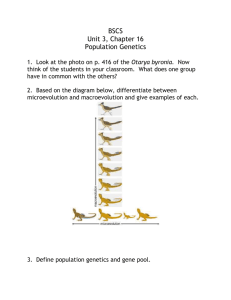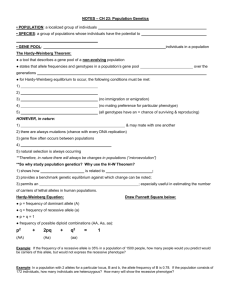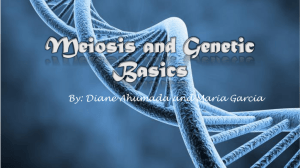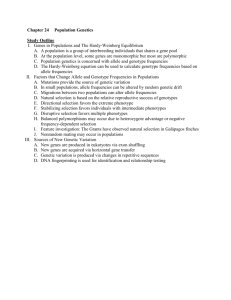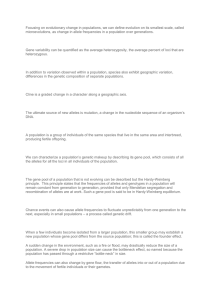Reading Guide - Belle Vernon Area School District
advertisement
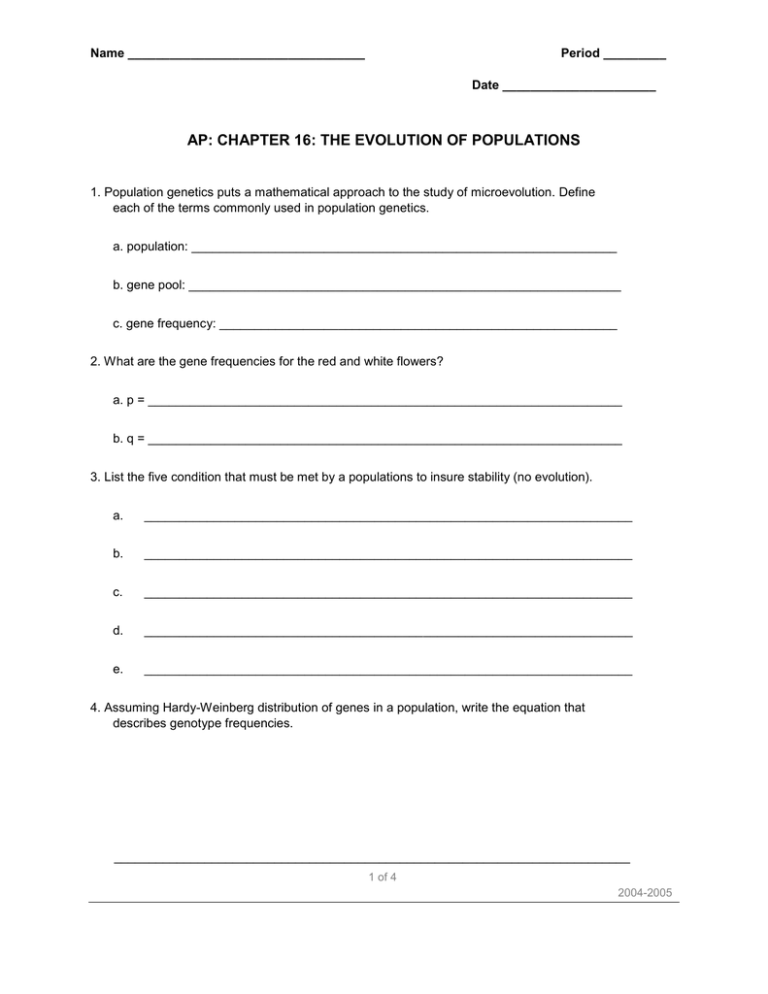
Name __________________________________ Period _________ Date ______________________ AP: CHAPTER 16: THE EVOLUTION OF POPULATIONS 1. Population genetics puts a mathematical approach to the study of microevolution. Define each of the terms commonly used in population genetics. a. population: _____________________________________________________________ b. gene pool: ______________________________________________________________ c. gene frequency: _________________________________________________________ 2. What are the gene frequencies for the red and white flowers? a. p = ____________________________________________________________________ b. q = ____________________________________________________________________ 3. List the five condition that must be met by a populations to insure stability (no evolution). a. ______________________________________________________________________ b. ______________________________________________________________________ c. ______________________________________________________________________ d. ______________________________________________________________________ e. ______________________________________________________________________ 4. Assuming Hardy-Weinberg distribution of genes in a population, write the equation that describes genotype frequencies. __________________________________________________________________________ 1 of 4 2004-2005 5. Define the following: a. p2 = ___________________________________________________________________ b. 2pq = __________________________________________________________________ c. q2 = ___________________________________________________________________ 6. Work out these practice problems. Find both the gene and genotype frequencies: a. In Drosophilia, the allele for normal length wings is dominant over the allele for vestigial wings. In a population of 1,000 individuals, 160 show the recessive phenotype. b. The allele for the hair pattern called "widow's peak" is dominant over the allele for no "widow's peak." In a population of 1,000 individuals, 360 show the dominant phenotype. 7. How does genetic drift apply to each of the following? Give an example of each. a. Founders effect: _________________________________________________________ __________________________________________________________________________ __________________________________________________________________________ b. Bottleneck effect _________________________________________________________ __________________________________________________________________________ 2 of 4 2004-2005 8. How do each of the following break H-W assumptions? a. natural selection: ________________________________________________________ __________________________________________________________________________ b. gene flow: ______________________________________________________________ __________________________________________________________________________ c. mutation: _______________________________________________________________ __________________________________________________________________________ d. selective mating: _________________________________________________________ __________________________________________________________________________ 9. Why is genetic variation important to evolution? __________________________________________________________________________ __________________________________________________________________________ 10. How can populations vary along a geographic axis compared to isolated populations? __________________________________________________________________________ __________________________________________________________________________ 11. What is the role of mutations to forming variation? __________________________________________________________________________ __________________________________________________________________________ 12. What factors of sexual reproduction lead to variations within a population? __________________________________________________________________________ __________________________________________________________________________ 3 of 4 2004-2005 13. How does diploidy preserve variation? __________________________________________________________________________ __________________________________________________________________________ 14. What is “balanced polymorphism?” __________________________________________________________________________ __________________________________________________________________________ 15. How can parasites contribute to balanced polymorphism? __________________________________________________________________________ __________________________________________________________________________ 16. In a biological sense, what is fitness? __________________________________________________________________________ __________________________________________________________________________ 17. Label the following graphs of variation in color with the type of selection. 4 of 4 2004-2005
